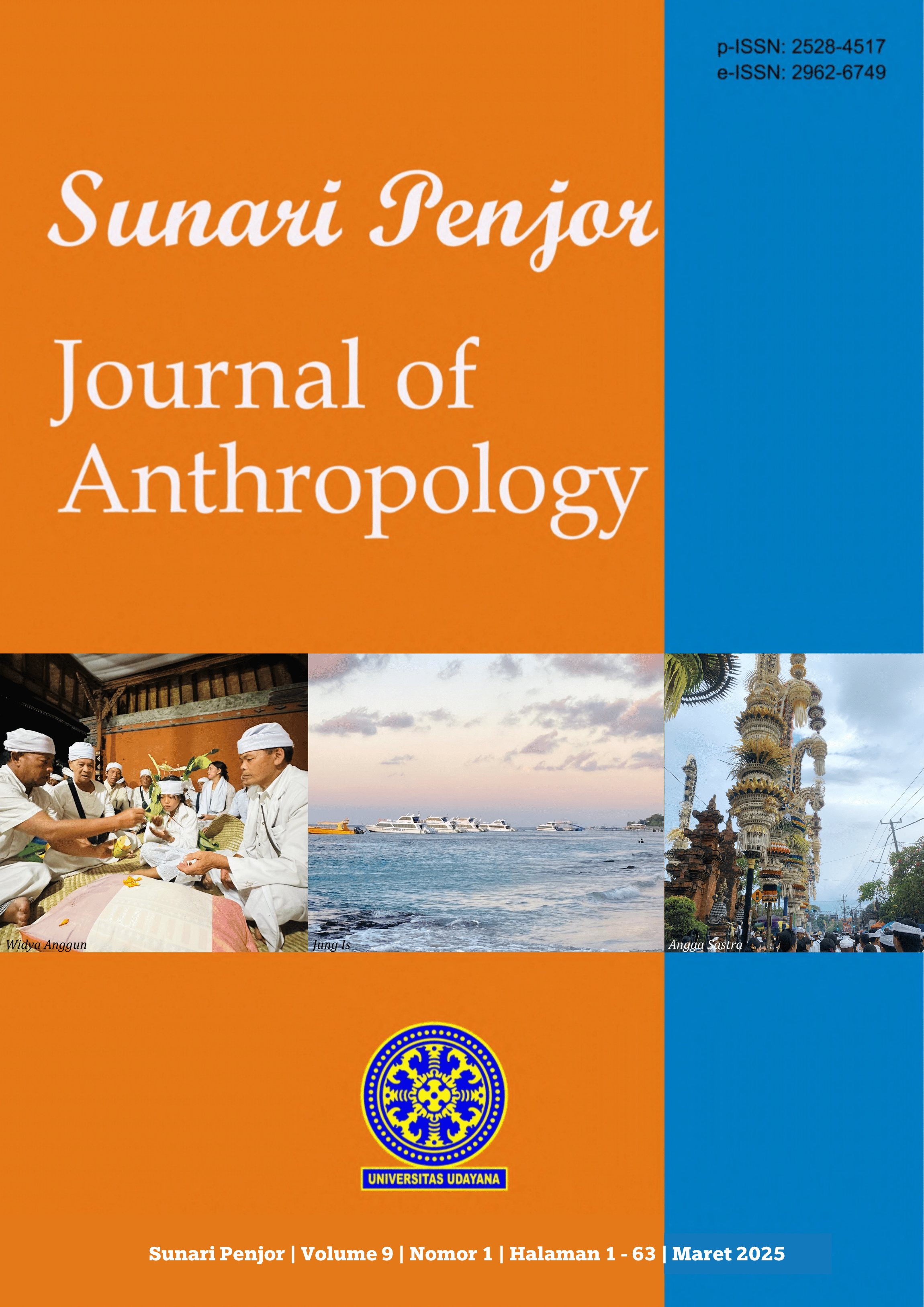Kearifan Lokal Masyarakat Tanjung Benoa sebagai Modal Resiliensi Gempa dan Tsunami
DOI:
https://doi.org/10.24843/SP.2025.v9.i01.p01Keywords:
Resilience, Local Wisdom, DisasterAbstract
The South Bali region has the potential for strong earthquakes that have the risk of triggering tsunamis, including Tanjung Benoa Village which is located in a coastal area with a high level of vulnerability because it is in a coastal area directly adjacent to the Bali Strait and the Indian Ocean. This study aims to examine the adaptation of coastal communities in responding to tsunami disaster vulnerability, using ethnoecological approaches and locally-based resilience. The research was conducted using qualitative methods. The results show that the adaptation of the Tanjung Benoa community is based on local knowledge that has been passed down from generation to generation. Local wisdom-based disaster preparedness is realised through the practice of daily life that is bound in customary unity with clear physical boundaries through Tri Hita Karana. Recognition as the first tsunami ready community by UNESCO/IOC confirms the community's efforts in strengthening village resilience. Disaster preparedness is carried out through sustainable resilience development involving the utilisation of local wisdom and pentahelix collaboration. This research emphasises the importance of integrating local knowledge in the management of disaster-prone areas to create resilient communities.












